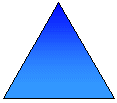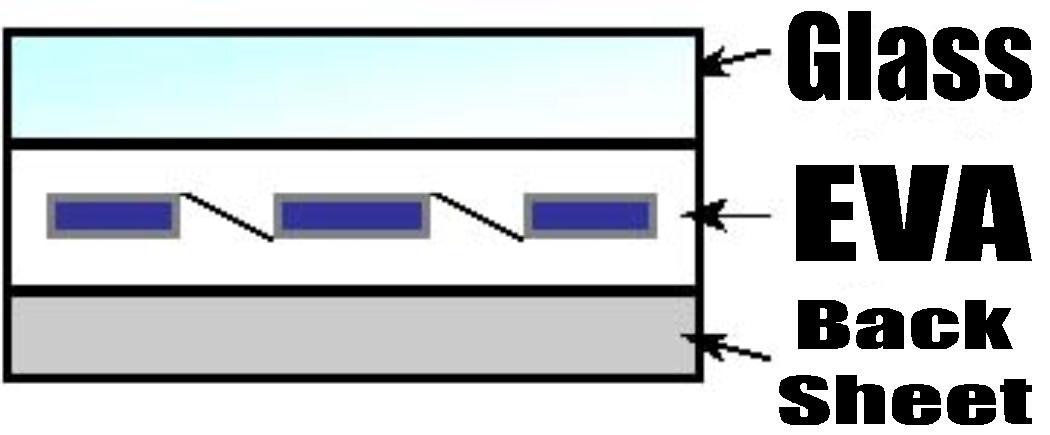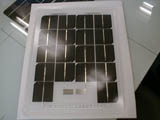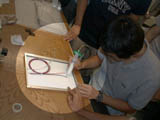| This time, we want to introduce
a photovoltaic module manufacturing process we have learnt from
a training at Showa Solar Energy Corporation. Some details
of the processes which we were not taught in the training have
been ommited. |
Main Process Flow
9. Intermediate
Inspection
Make a visual inspection of
the junctions, and then measure the open-circuit voltage.
|
 top top
10. Laminating


EVA (Ethylene Vinyl Acetate)
is encapsulated between the solar cell and the tempered glass.
This module is heated in the laminating machine for one hour
so that the EVA is melted and cross-linked. After
this process, the structure of this module cannot be altered.
|
 top top
11. Shaping
Cut off the extra back sheeting
and EVA with a hot knife.
|
 top top
12. Edging
Double-faced tape with good
adhesion should be attached to the glass to make a frame.
|
 top top
13. Framing
 Compress the frame firmly.
Make sure that the double-faced tape adheres well. Once
the frame is attached, it can never be changed again.
After that, put bolts on it.
Compress the frame firmly.
Make sure that the double-faced tape adheres well. Once
the frame is attached, it can never be changed again.
After that, put bolts on it.
|
 top top
14. Junction
Box
 Make a hole on the back side
of the module so that the copper electrode is soldered and
connected to the copper wire. This junction is protected by
a junction box attached with silicon gum. The
silicon gum protects the module against humidity and water.
It takes two days to get dry completely.
Make a hole on the back side
of the module so that the copper electrode is soldered and
connected to the copper wire. This junction is protected by
a junction box attached with silicon gum. The
silicon gum protects the module against humidity and water.
It takes two days to get dry completely.
|
 top top
15. Final
Inspection
Characteristics of the photovoltaic
module are checked by a solar simulator instantaneously. I-V
(current-voltage) characteristic is measured using a simulator
flash. Also the junction, any change in color, and bubbles
inside of the EVA should be checked for visually.
|
 top top
previous
 next next
|




